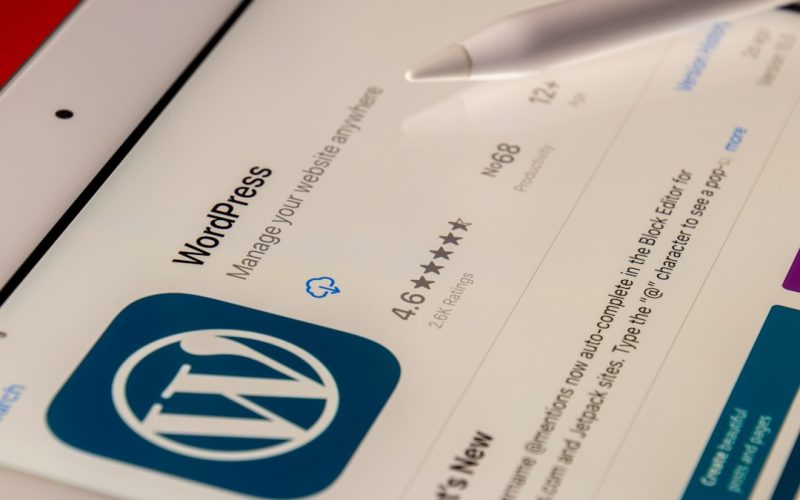In the digital age, building an email list is one of the most effective strategies for engaging with an audience and nurturing potential customers. I have come to realize that email marketing is not just about sending out newsletters; it’s about creating a direct line of communication with individuals who have expressed interest in what I offer. With WordPress as my platform, I have found that the process of building an email list can be both straightforward and rewarding.
The ability to connect with my audience on a personal level through their inboxes has transformed the way I approach my online business. Email list building is essential for anyone looking to grow their brand or business. Unlike social media platforms, where algorithms can limit visibility, an email list allows me to reach my subscribers directly.
This means that I can share valuable content, promotions, and updates without worrying about whether my message will be seen. As I delve deeper into the world of email marketing, I have discovered that the combination of WordPress and effective list-building strategies can lead to significant growth and engagement.
Table of Contents
ToggleKey Takeaways
- Setting up a WordPress website is the first step in building an email list
- Choosing the right email marketing plugin is crucial for effective list building
- Creating an irresistible lead magnet is essential for attracting subscribers
- Designing opt-in forms and pop-ups can help capture email addresses
- Leveraging social media and guest blogging can drive traffic to your opt-in forms
Setting Up Your WordPress Website for Email List Building
To effectively build an email list, I first needed to ensure that my WordPress website was optimized for this purpose. The initial step involved selecting a reliable hosting provider and installing WordPress, which I found to be user-friendly and customizable. Once my site was up and running, I focused on choosing a theme that not only reflected my brand but also supported email marketing functionalities.
A clean, responsive design is crucial, as it enhances user experience and encourages visitors to subscribe. Next, I made sure to create dedicated pages for my email list sign-up forms. This included a landing page specifically designed to convert visitors into subscribers.
I learned that having a clear call-to-action (CTA) is vital; it guides potential subscribers on what to do next. By integrating my email sign-up forms seamlessly into my website’s layout, I aimed to make the process as easy as possible for visitors. The more straightforward the sign-up process, the higher the likelihood of capturing email addresses.
Choosing the Right Email Marketing Plugin for WordPress

With my website set up, the next step was selecting an email marketing plugin that would facilitate my list-building efforts. There are numerous options available, but I found it essential to choose one that aligns with my specific needs and goals. After researching various plugins, I settled on one that offered robust features such as automation, segmentation, and analytics. This choice has proven invaluable in managing my growing list effectively. The right plugin not only simplifies the process of collecting email addresses but also enhances my ability to communicate with subscribers.
Features like customizable templates and A/B testing have allowed me to experiment with different approaches to see what resonates best with my audience. Additionally, I appreciated the integration capabilities with other tools I was already using, such as social media platforms and e-commerce solutions. This seamless connectivity has streamlined my marketing efforts and made it easier to manage my email campaigns.
Creating an Irresistible Lead Magnet to Attract Subscribers
| Lead Magnet Type | Conversion Rate | Number of Subscribers Attracted |
|---|---|---|
| Ebook | 25% | 500 |
| Checklist | 30% | 700 |
| Video Series | 20% | 400 |
One of the most effective ways I have found to attract subscribers is by offering a lead magnet—something of value that encourages visitors to provide their email addresses. This could be anything from an eBook or a checklist to exclusive access to webinars or discounts on products. The key is to ensure that the lead magnet is relevant to my target audience and addresses their pain points or interests.
In crafting my lead magnet, I focused on quality over quantity. I wanted to create something that not only captured attention but also provided genuine value. For instance, I developed a comprehensive guide related to my niche that offered actionable insights and tips.
By promoting this lead magnet prominently on my website and through social media channels, I was able to significantly increase my subscriber count. The excitement around receiving something valuable in exchange for their email addresses has proven to be a powerful motivator for potential subscribers.
Designing Opt-in Forms and Pop-ups to Capture Email Addresses
Once I had my lead magnet in place, the next step was designing opt-in forms and pop-ups that would effectively capture email addresses. I learned that the design and placement of these forms are crucial in maximizing conversions. Simple, visually appealing forms with clear CTAs tend to perform better than cluttered or overly complicated ones.
I experimented with different designs and messaging to see what resonated most with my audience. Pop-ups can be particularly effective when used strategically. While some may find them intrusive, I discovered that well-timed pop-ups—such as those that appear after a visitor has spent a certain amount of time on a page—can significantly increase sign-ups without disrupting the user experience.
Additionally, I made sure that my opt-in forms were mobile-friendly, as a significant portion of my audience accesses my site via mobile devices. By ensuring that these forms are easy to fill out on any device, I aimed to capture as many leads as possible.
Implementing Opt-in Form Placement Strategies for Maximum Visibility

Placement strategies for opt-in forms are critical in ensuring maximum visibility and engagement. Through trial and error, I learned that placing forms in multiple locations on my website can lead to higher conversion rates. For instance, having a sign-up form in the sidebar, at the end of blog posts, and as a pop-up can cater to different visitor behaviors and preferences.
I also discovered the importance of context when placing opt-in forms. For example, embedding a form within relevant blog posts or articles can create a natural flow for readers who are already engaged with the content. By strategically positioning these forms where they make sense contextually, I was able to enhance their effectiveness significantly.
Additionally, using exit-intent pop-ups—forms that appear when a user is about to leave the site—has proven beneficial in capturing those who might otherwise leave without subscribing.
Using Content Upgrades to Encourage Email Sign-ups
Content upgrades have become one of my favorite tactics for encouraging email sign-ups.
This strategy involves offering additional valuable content related to specific blog posts in exchange for an email address.
For instance, if I write a blog post about productivity tips, I might offer a downloadable worksheet or template that complements the content.
By providing content upgrades tailored to individual posts, I found that I could significantly increase engagement and conversions. Readers who are already interested in a particular topic are more likely to subscribe for additional resources that enhance their understanding or application of that topic. This targeted approach not only boosts my email list but also establishes me as a valuable resource in my niche.
Leveraging Social Media and Guest Blogging to Drive Traffic to Your Opt-in Forms
To further expand my reach and drive traffic to my opt-in forms, I turned to social media and guest blogging as powerful tools in my arsenal. By sharing snippets of valuable content from my blog on platforms like Instagram, Facebook, and Twitter, I was able to pique interest and direct followers back to my website where they could find my lead magnet and sign-up forms. Guest blogging has also been instrumental in reaching new audiences.
By contributing high-quality articles to reputable blogs within my niche, I not only established credibility but also included links back to my own site where readers could access my lead magnet. This strategy has allowed me to tap into established audiences who are likely interested in what I offer, thereby increasing both traffic and subscriber numbers.
Crafting Compelling Email Sequences to Nurture New Subscribers
Once subscribers join my list, it’s essential to nurture those relationships through well-crafted email sequences. I learned that the initial welcome email is crucial; it sets the tone for future communications and reinforces the value of subscribing. In this email, I express gratitude for their subscription and provide them with immediate access to their lead magnet.
Following the welcome email, I developed a series of follow-up emails designed to engage subscribers further. These emails include valuable content, tips related to their interests, and occasional promotional offers. By providing consistent value through these sequences, I aim to build trust and keep subscribers engaged over time.
The goal is not just to sell but to foster a genuine relationship that encourages long-term loyalty.
Analyzing and Optimizing Your Email List Building Efforts
As with any marketing strategy, analyzing and optimizing my email list-building efforts has been crucial for ongoing success. Utilizing analytics tools provided by my email marketing plugin allows me to track key metrics such as open rates, click-through rates, and conversion rates for my opt-in forms. By regularly reviewing this data, I can identify what’s working well and what needs improvement.
For instance, if I notice that certain opt-in forms are underperforming compared to others, I can experiment with different designs or messaging based on subscriber feedback or behavior patterns. A/B testing has become an invaluable practice; by testing different subject lines or content formats within my emails, I can refine my approach based on real data rather than assumptions. This continuous optimization process ensures that my email list-building efforts remain effective and aligned with my audience’s preferences.
Conclusion and Next Steps for Growing Your Email List with WordPress
In conclusion, building an email list using WordPress has been an enriching journey filled with learning opportunities and growth potential. From setting up an optimized website and choosing the right plugins to creating compelling lead magnets and nurturing subscriber relationships through targeted email sequences, each step has contributed significantly to expanding my reach and engagement. As I look ahead, I am excited about continuing this journey by exploring new strategies such as advanced segmentation techniques and personalized content delivery based on subscriber behavior.
The world of email marketing is ever-evolving, and staying informed about best practices will be key in maintaining momentum in growing my email list further. With each new subscriber comes the potential for deeper connections and greater business success—an opportunity I am eager to embrace as I continue leveraging WordPress for effective email list building.
If you are looking to build an email list for your gardening website, you may find this article helpful. It provides tips and strategies specifically tailored for those in the gardening industry. By following the steps outlined in the article, you can start growing your email list in just 7 days.
FAQs
What is an email list?
An email list is a collection of email addresses used by businesses and individuals to send marketing materials, newsletters, and other information to a group of subscribers.
Why is building an email list important?
Building an email list is important because it allows businesses and individuals to directly communicate with their audience, promote products or services, and build a loyal customer base.
How can WordPress be used to build an email list?
WordPress can be used to build an email list by integrating email marketing plugins, creating opt-in forms, and offering incentives such as lead magnets to encourage visitors to subscribe.
What are some popular email marketing plugins for WordPress?
Some popular email marketing plugins for WordPress include Mailchimp, Constant Contact, AWeber, and ConvertKit.
What are lead magnets and how can they help build an email list?
Lead magnets are incentives offered to website visitors in exchange for their email address, such as free ebooks, checklists, or webinars. They can help build an email list by encouraging visitors to subscribe in order to receive the incentive.
How long does it take to build an email list using WordPress?
Building an email list using WordPress can vary in time, but with consistent effort and effective strategies, it is possible to build a substantial email list in just 7 days.




